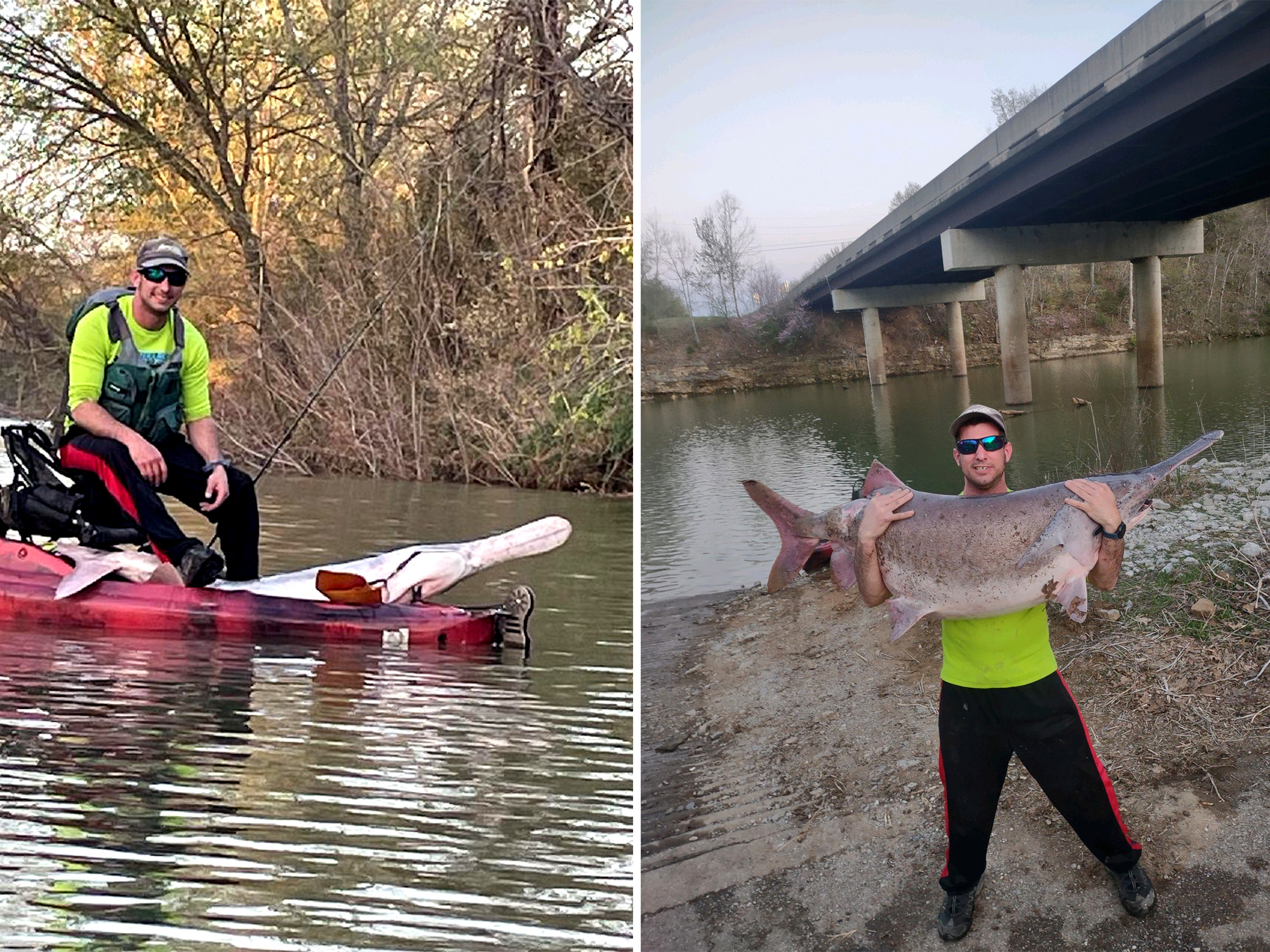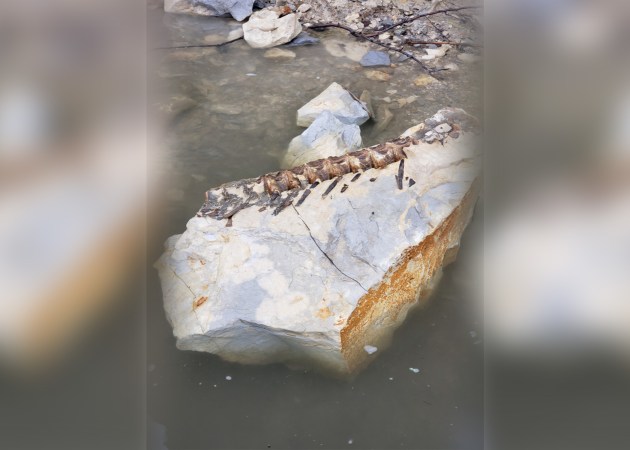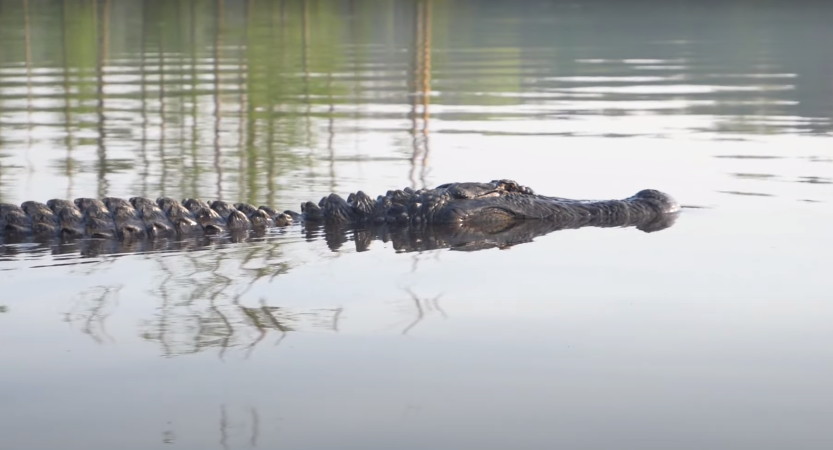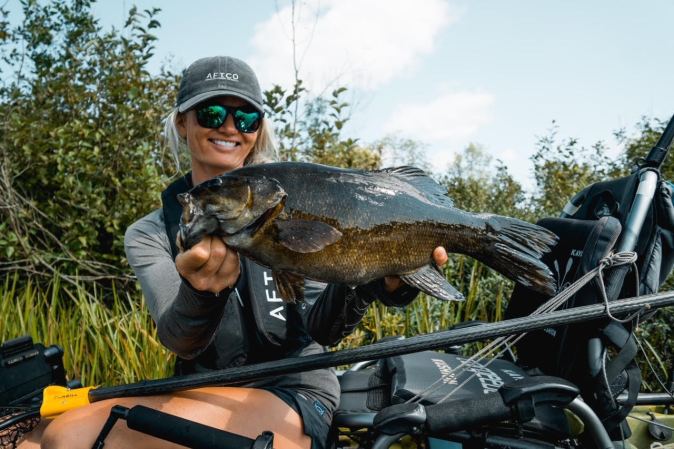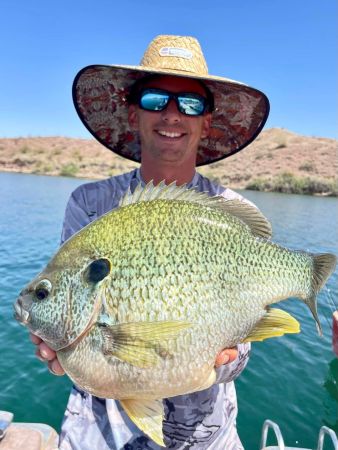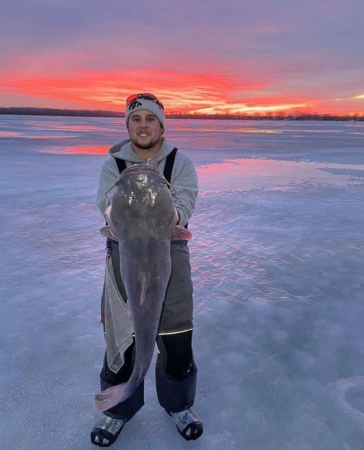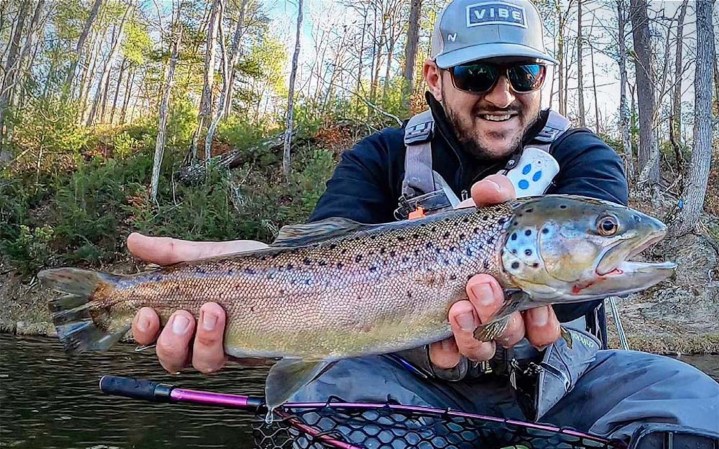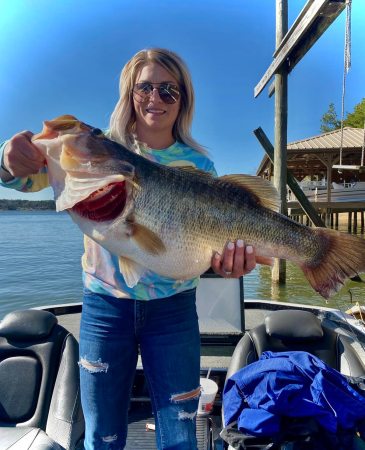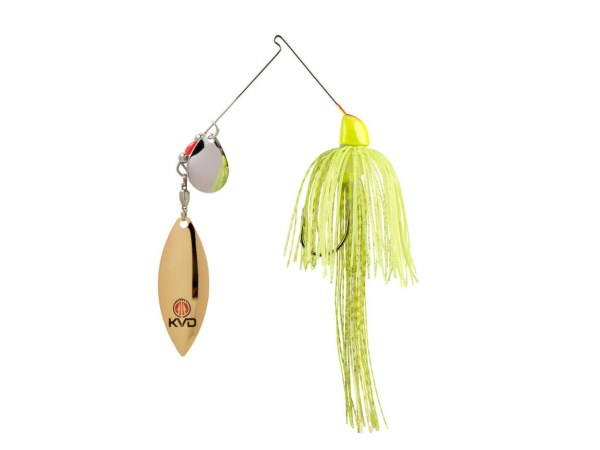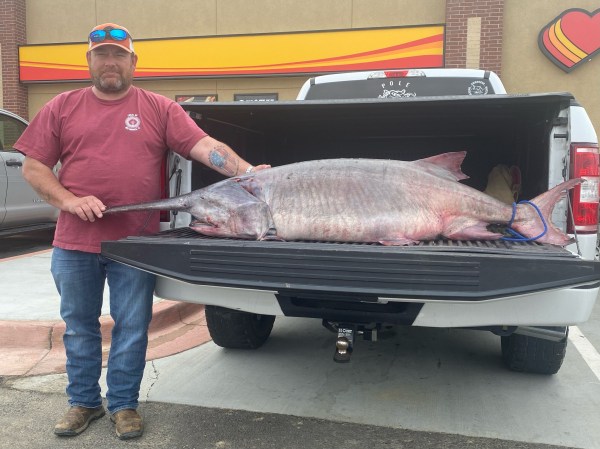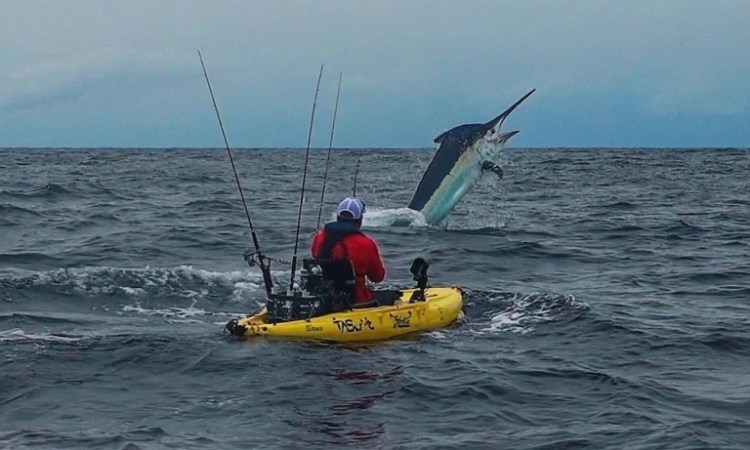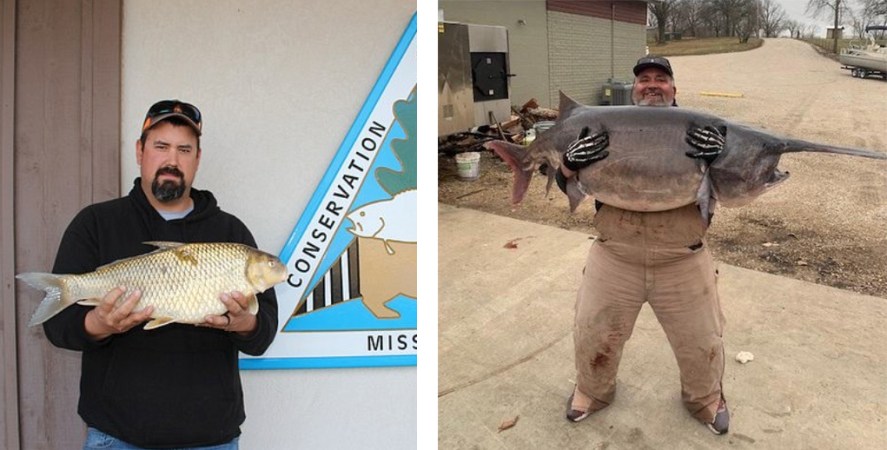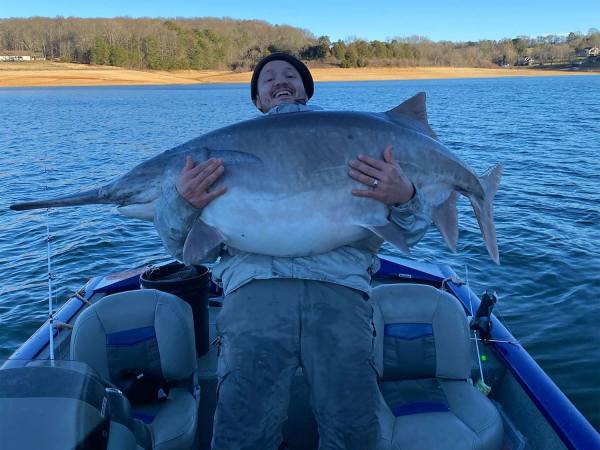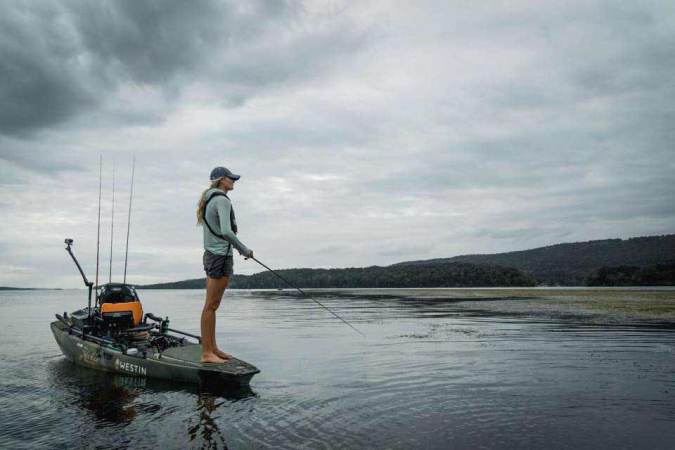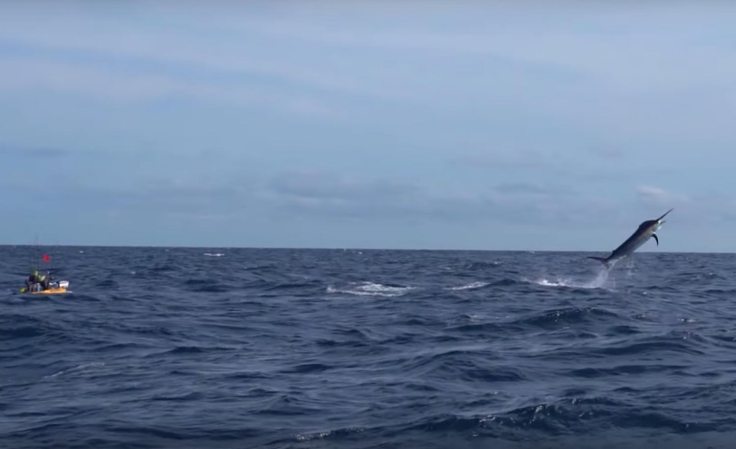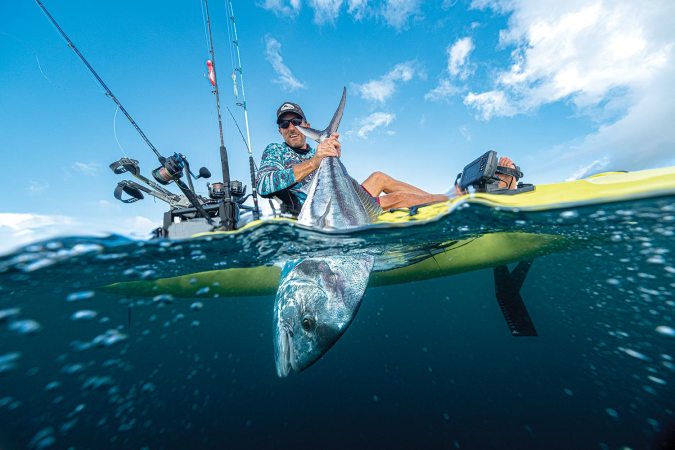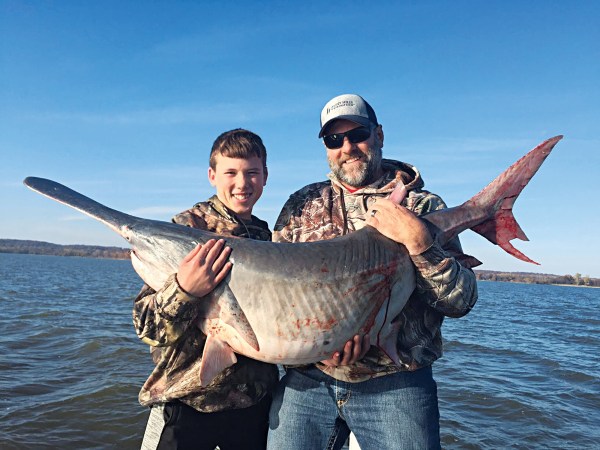Robert Murphy, of Fayetteville, Arkansas, was walleye fishing from his kayak in the upper White River last week when he snagged a huge paddlefish on light tackle. The big paddlefish (also known as a spoonbill) dragged his sit-on-top kayak up and down the White for nearly an hour before Murphy was able to land it. The fish weighed a whopping 102 pounds, according to the Arkansas Game and Fish Commission.
Murphy tells Outdoor Life that he launched his Old Town Predator XL kayak at about 5:30 p.m. on April 3. He had just finished work at Gunn’s Granite, where he cuts stone, and he headed for an access on the White River known as “Twin Bridges.” He was targeting walleye that evening, but it didn’t take him long for him to notice something much bigger on his sonar.
“I saw some big fish on my kayak depth sounder that I thought might be striped bass or gar,” he says. “There were a lot of people on the water that evening chasing white bass and other fish. Then I saw a guy hook a big fish and start fighting it.”
That’s when Murphy felt a heavy weight on the end of his line. As he came tight to the fish, he saw that the other angler had landed a big paddlefish.
“That’s when I realized what I had,” he said. “I was using a 3-inch Berkley Flicker Shad that runs about 10 or 12 feet deep. I just bumped the fish with the lure and hooked it at the top of its tail.”
Murphy was in for a brutal battle. Landing a 100-plus-pound fish on 12-pound test is hard enough, but when that fish is foul-hooked in the tail, trying to control it is nearly impossible. He fought the spoonbill for over an hour as it dragged his kayak up and down the White River. He struggled to move the fish off the bottom and keep it out of heavy cover along the shoreline.
“I have an electric motor on my kayak, and I had to use it to spook the fish back into deep water to keep it from fouling in near-shore brush,” Murphy explains. “The fish had a scar on its side that I’m sure was a propeller mark. I’m sure that’s why it didn’t like my motor, which helped me keep it in mid-current during the fight.”
He eventually got the fish boat-side and hauled it onto his kayak. Then he contacted AGFC to try and locate a certified scale.
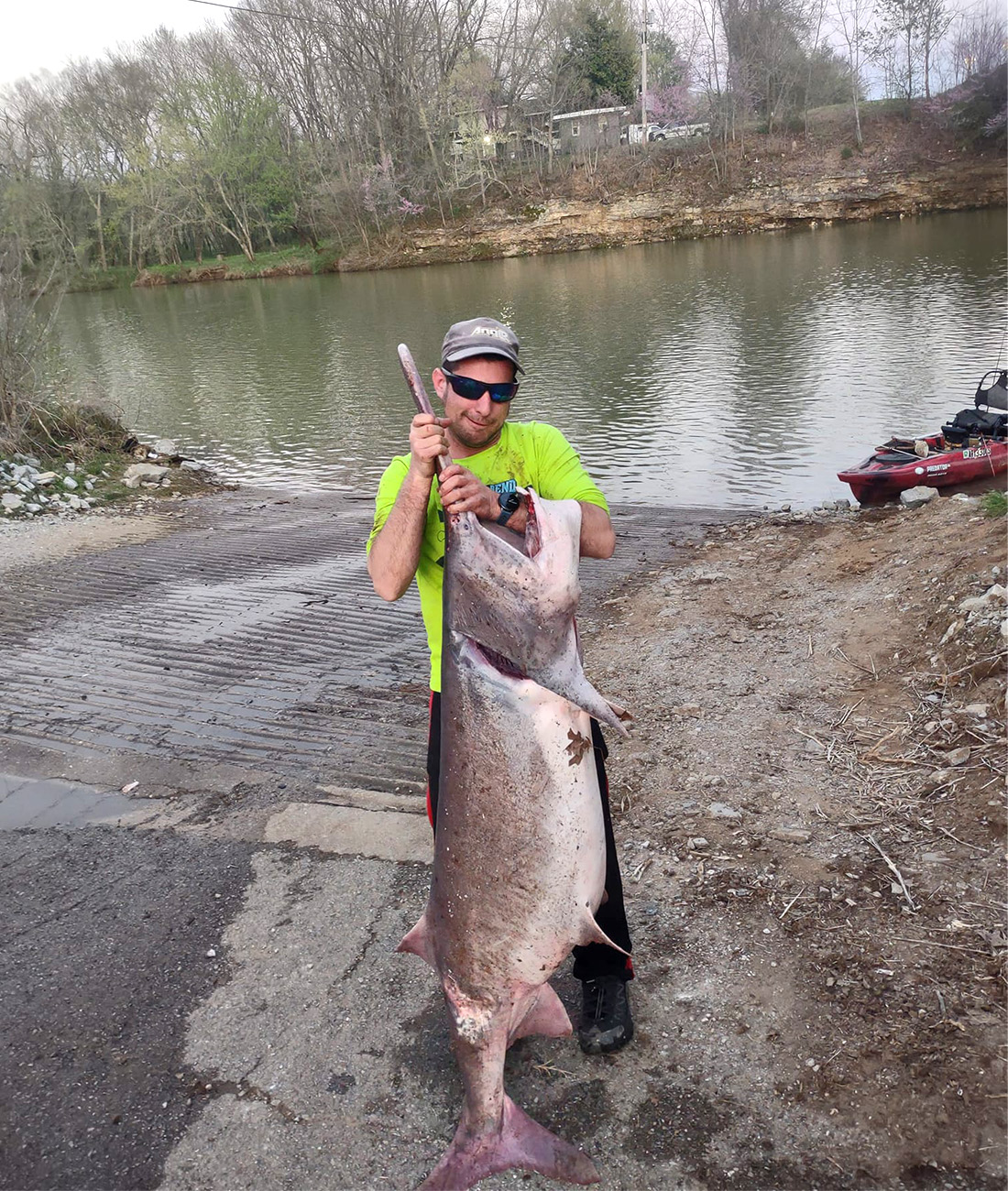
“It was tough locating a place, and it was 20 hours later before I found a Fed Ex office in the town of Siloam Springs where I could weigh it,” he says. “I had a lot of help from folks keeping that fish cold and packed in ice on a trailer to get it weighed. The people from ‘On The Mark’ restaurant in Fayetteville were awesome helping me with it.”
The paddlefish weighed 102 pounds and measured 71.5-inches long. Murphy kept the fish, and he’s already eaten the prized roe from the fish. He says it was outstanding table fare.
Murphy’s 102 pounder is shy of the Arkansas state record for the species. That record belongs to Minnesota angler James C. Johnson, who caught a 118-pound, 9-ounce paddlefish from Beaver Lake in 2020.
Read Next: Teenager Catches World-Record Paddlefish in Oklahoma
The American paddlefish is a prehistoric fish species. They have giant blade-like bills that are between one-fourth and one-third of their total body length. The toothless filter feeders primarily eat zooplankton and insect larvae, which makes them difficult to target with a hook and line. Virtually all paddlefish caught by anglers are snagged, but this practice is only allowed in certain states.
Paddlefish are typically snagged in lakes and slow-moving streams, and some of the biggest spoonbills ever recorded have been pulled from Lake of the Ozarks in Missouri. The fish will congregate during spawning season in the spring, however, and they’ll often move into faster, shallower stretches of river as the larger females prepare to drop their eggs.

